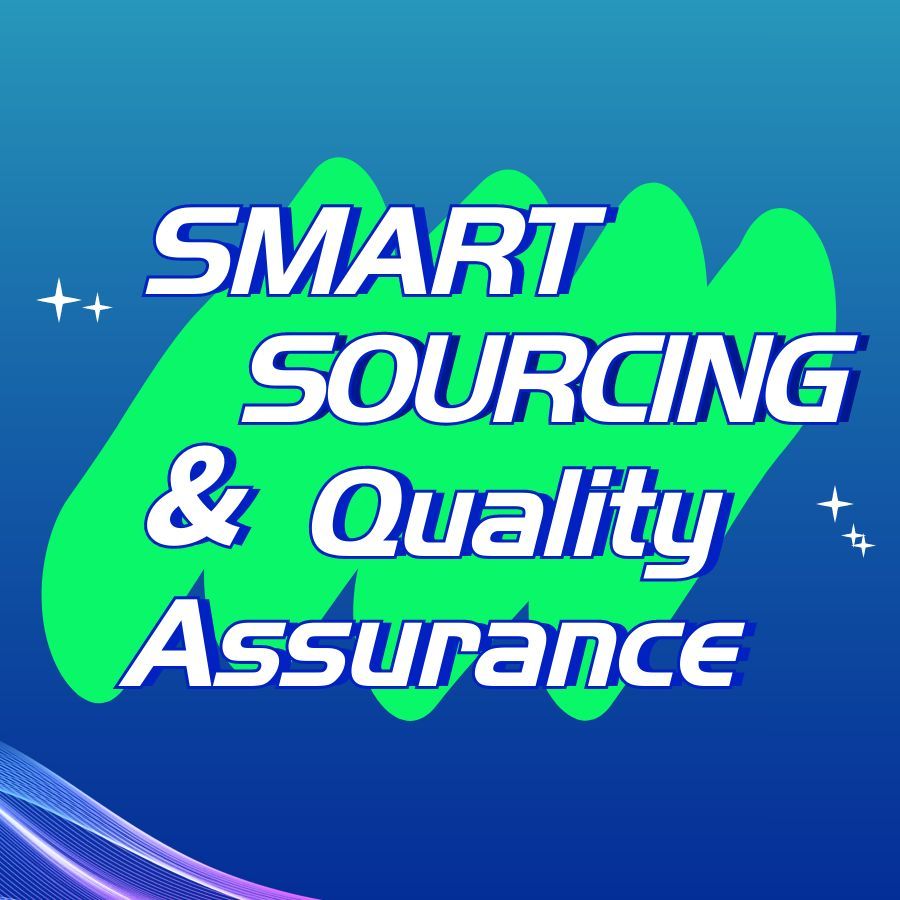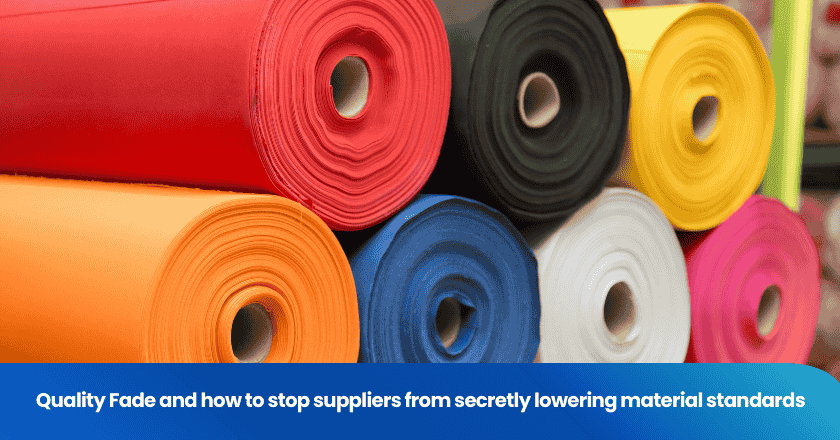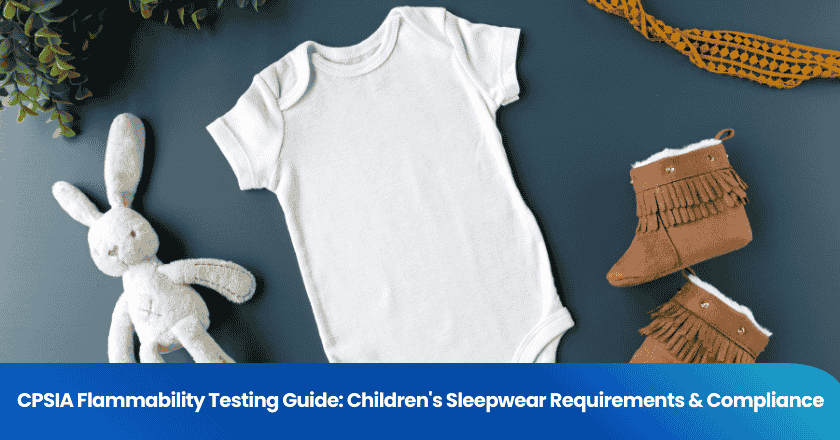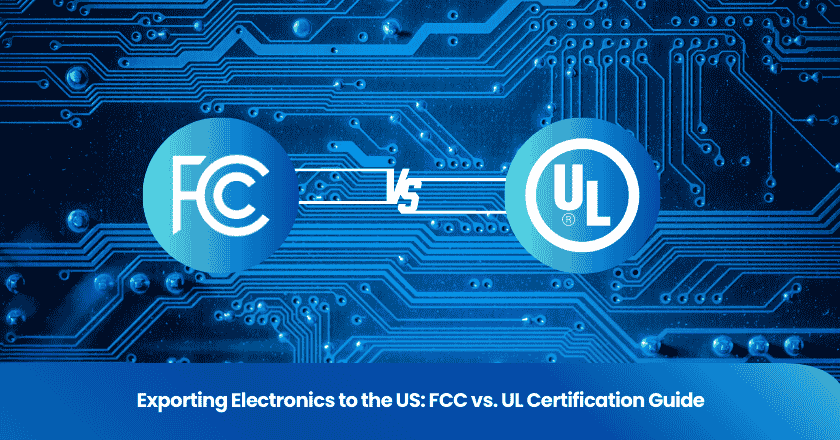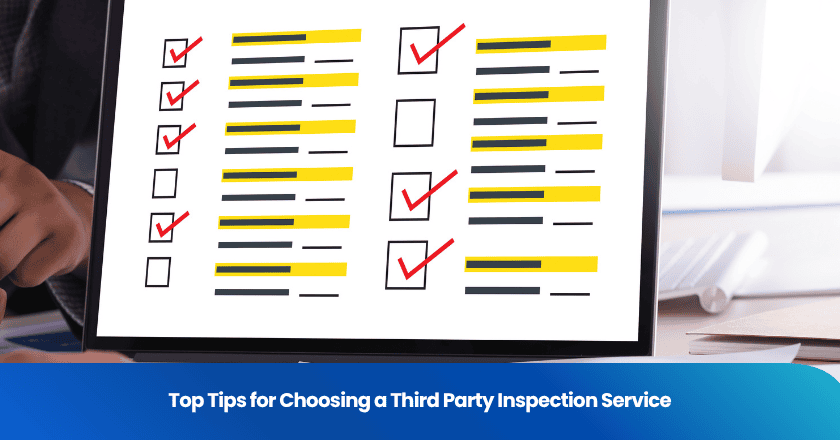
Unbiased, professional third party inspection plays a critical role in your supply chain. You need to ensure safety and compliance at every stage. High-quality inspections help you meet global standards and build trust with suppliers. They also allow you to identify risks early, which can prevent costly delays and recalls. Strong inspection practices support product quality and strengthen your business reputation.
Define Needs
Product Category
You should start by identifying the product category that requires third party inspection. Each category presents unique challenges and standards. For example, high-end goods often demand strict quality checks, while electronics require detailed safety and functionality assessments. Fashion accessories, home goods, and wellness products also have specific inspection needs.
- High-end goods
- Electronics
- Fashion accessories
- Home goods
- Wellness products
When you match your product category with the right third party inspection provider, you gain access to inspectors who understand the relevant standards and risks. This step helps you avoid gaps in safety and compliance.
Inspection Scope
Defining the scope of inspections ensures you address all critical aspects of your products. You should consider the following factors:
| Factor | Description |
|---|---|
| Clear Criteria | Set specific standards and thresholds for inspections to keep them relevant and focused. |
| Types of Inspections | Identify the inspection types needed for your industry. |
| Compliance with Regulations | Make sure inspections meet all regulatory standards to avoid legal issues. |
| Seal Integrity | Test seals visually or physically to confirm their integrity. |
| Label Accuracy and Compliance | Review labels for correct information and legibility. |
| Structural Strength and Durability | Test for durability and strength. |
| Material Safety and Compatibility | Check for chemical safety and compatibility. |
| Dimensional Accuracy and Fill Levels | Measure size, weight, and volume for consistency. |
You may also want to clarify your main goals for third party inspection services. Many businesses focus on quality control, regulatory compliance, and support for small or medium-sized enterprises. Providers often tailor their services to your needs, offering customized inspection plans and working closely with you to ensure safety and compliance. This client-centric approach helps you achieve consistent quality and reliable inspections across your supply chain.
Third Party Inspection Experience
Industry Knowledge
You should always look for third party inspection providers with deep industry knowledge. When inspectors understand your product category, they can spot potential risks and unique challenges. For example, electronics require different safety checks than home goods or fashion accessories. Inspectors with experience in your field know the latest standards and regulations. This expertise helps you avoid compliance issues and ensures your products meet all necessary requirements.
Industry knowledge also means inspectors can adapt their approach to your specific needs. They know which tests matter most for your products. You gain confidence that inspections will cover every important detail. This focus on relevant criteria supports both safety and quality throughout your supply chain.
Tip: Ask potential providers about their experience with your product type. Request examples of past inspections in your industry.
Track Record
A strong track record signals reliability and trustworthiness in third party inspection services. You want a provider who consistently delivers accurate results and thorough reports. Providers with proven experience often have systems in place to catch problems early. This proactive approach leads to fewer costly issues and higher satisfaction.
Consider these benefits of choosing a provider with a solid track record:
- Experienced inspectors identify compliance issues early, which reduces risks and improves client satisfaction.
- Established firms deliver consistent service and reliable inspection quality, supporting both safety and compliance.
- Detailed inspections and clear reporting help you maintain operational excellence and avoid compliance failures.
You should review client testimonials and case studies to gauge a provider’s performance. A history of successful inspections shows that the provider values safety and quality as much as you do. By choosing a third-party inspection partner with a strong background, you protect your business and ensure your products meet the highest standards.
Certifications & Accreditation
ISO/IEC 17025
When you choose a third party inspection agency, you should always check for ISO/IEC 17025 accreditation. This standard shows that a laboratory has the technical skills and a strong commitment to quality. You can trust that inspections will meet high standards and deliver reliable results. Many regulatory bodies require this accreditation for compliance, which helps you avoid problems with regulations.
- Accreditation to ISO/IEC 17025 demonstrates technical competence and a focus on quality.
- You gain trust from clients and stakeholders because the results are accurate and reliable.
- The standard supports the acceptance of test results across borders, which reduces the need for repeated inspections.
- Laboratories with this accreditation follow systematic processes and strive for continual improvement, which leads to fewer errors and greater efficiency.
- Accreditation sets inspection agencies apart in a competitive market, showing their commitment to safety and quality.
- Regulatory approval becomes easier when you use ISO/IEC 17025-accredited laboratories.
Tip: Always ask for proof of accreditation before you select a third-party inspection provider. This step protects your business and supports long-term success.
Qualified Inspectors
Inspector qualifications play a key role in the effectiveness of third party inspection services. You want inspectors who have the right certification and experience. For example, ASHI certification gives inspectors recognition and builds client trust. Inspectors must also pass the National Home Inspector Exam, complete a set number of inspections, and submit reports for review. These steps ensure that inspectors understand safety, compliance, and quality.
| Qualification/Certification | Description |
|---|---|
| Material Certification | Inspectors know how to verify materials for quality control and compliance. |
| Inspection Levels | They understand different inspection levels, from self-inspection to third-party certification. |
| Compliance with Standards | Inspectors ensure that inspections meet international standards like ISO and ASTM. |
You should always confirm that your inspection agency employs qualified inspectors. This step ensures that inspections are thorough, accurate, and meet all safety and compliance requirements.
Geographic Coverage
Local Presence
You should consider the geographic coverage of any third party inspection agency before making a decision. Geographic coverage plays a vital role in the effectiveness and reliability of third party inspection services. Agencies with a strong local presence can respond quickly to inspection requests and minimize logistical challenges. Local inspectors understand regional compliance standards, which improves reliability and ensures inspections meet all necessary requirements.
A local presence offers several advantages for your business:
- Unbiased assessments that support objectivity in inspections.
- Compliance with both local and international standards, which strengthens operational integrity.
- Enhanced safety and regulatory compliance, especially in regions with strict guidelines.
- The ability to leverage local expertise while maintaining global standards.
You gain peace of mind knowing that inspections will address specific regional risks and requirements. Local inspectors help you maintain product quality and safety, which protects your reputation and supports long-term success.
Global Reach
If your supply chain spans multiple countries, you need third party inspection services with global reach. Providers with worldwide coverage deliver consistent service quality across different regions. They standardize processes, which ensures uniform adherence to international standards and simplifies audits and certifications. This approach helps you maintain product quality and compliance, even in complex, regulation-driven environments.
Global inspection agencies help you mitigate risks and maintain industry standards. You benefit from smooth audits and certifications, which support cross-border partnerships. This level of coverage ensures your products meet safety and quality expectations everywhere you operate.
Speed & Responsiveness
Timely Inspections
You need third party inspection services that deliver fast, reliable results. Timely inspections keep your supply chain moving and help you avoid costly delays. In the manufacturing sector, most inspections take just one day. Inspection agencies often schedule these checks in advance, sometimes for the same day production ends. This approach ensures you receive immediate feedback on product quality and safety.
- Most inspections take just one day.
- Inspections can be scheduled in advance.
- Many inspections occur the same day production ends.
When you work with a responsive inspection agency, you gain confidence in your ability to meet deadlines. Quick inspections support safety and compliance by catching issues before products leave the factory. You also improve reliability across your operations, which strengthens your reputation with partners and customers.
Tip: Ask your inspection agency about their average turnaround time and how they handle urgent requests. Fast response times can make a big difference in maintaining product quality and safety.
Fast Reporting
Speed does not stop at the inspection itself. You also need rapid, accurate reporting to make informed decisions. Fast reporting from third-party inspection providers enhances transparency. Buyers now expect real-time inspection data and traceability, especially with digital innovations in the industry. Automation and streamlined reporting shorten procurement cycles, which is vital for just-in-time manufacturing.
- Enhanced transparency with real-time data and traceability.
- Faster procurement cycles due to automated, streamlined reporting.
- Stricter vendor evaluation, focusing on compliance, innovation, and scalability.
Quick access to inspection results allows you to address safety concerns immediately. You can also evaluate vendors more effectively and ensure compliance with industry standards. Fast, clear reports from your inspection agency help you maintain high product quality and operational efficiency.
Inspection Process
Methodology
Understanding the methodology of third party inspection is essential for maintaining safety and compliance. You need to know how inspections unfold from start to finish. A clear process helps you set expectations and ensures that every step supports product quality. Most inspection agencies follow a structured approach:
1. Define objectives for the inspection process.
2. Create a detailed checklist to guide inspections.
3. Select reliable third party inspection services.
4. Conduct pre-production inspections.
5. Perform during-production inspections.
6. Execute final inspections to ensure product quality.
7. Address any non-conformities identified during inspections.
8. Implement improvements for future inspection processes.
You may also encounter specific types of inspections, such as First Article Inspection, Initial Production Check, During Production Check, Final Random Inspection, Pre-Shipment Inspection, and Container Loading Supervision. Each step targets a different stage of production, helping you catch issues early and maintain high standards. When you understand the methodology, you can better communicate with your inspection agency and ensure that their expertise matches your needs.
Transparency
Transparency in the inspection process builds trust between you and your third-party inspection provider. When you receive clear, accessible reports, you gain insight into every stage of the inspection. This openness allows you to verify safety and compliance, making it easier to address concerns quickly. Transparent communication also means you stay informed about any non-conformities and the steps taken to resolve them.
Proactive updates and real-time verification of inspection results further support reliability. For example, some platforms capture tamper-proof photos and videos, providing you with authentic evidence of the inspection. When your inspection agency shares information openly, you feel confident in their expertise and commitment to quality. This level of transparency sets clear expectations and strengthens your business relationships.
Third Party Inspection Services for Compliance
Regulatory Standards
You must ensure that your products meet all relevant regulatory standards when working with third party inspection services. Major export markets require strict adherence to international standards. Inspection agencies check for compliance with ISO, CE, and UL requirements. These standards help you maintain safety and quality across your supply chain. Inspections focus on identifying risks and confirming that your products meet destination country regulations.
- ISO standards set global benchmarks for product safety and performance.
- CE marking demonstrates conformity with European safety and environmental rules.
- UL certification confirms that products meet North American safety standards.
You should ask your inspection agency about their experience with these standards. Regular inspections help you avoid costly compliance failures and protect your business reputation.
Note: Frequent compliance failures include inadequate record keeping, late report filings, weak cybersecurity, inaccurate marketing, and poor supervision or training. Addressing these issues early supports safety and regulatory success.
Documentation
Proper documentation proves that your products have passed inspections and meet all compliance requirements. You need to keep detailed records for every stage of the process. Inspection agencies provide you with essential documents that support your claims of safety and quality. These records also help you respond quickly to regulatory audits or customer inquiries.
| Documentation Type | Description |
|---|---|
| Proof of Filings | Shows all filings, registrations, or approvals from regulatory authorities. |
| Compliance Monitoring Plan | Outlines how you monitor and maintain compliance. |
| Inspection Rights | Allows regulators to review compliance documentation at your premises. |
| Minimum Standards | Ensures all documents meet required standards and come from recognized authorities. |
| Subcontractor Compliance | Confirms that subcontractors provide equivalent documentation. |
| Retention of Records | Requires you to keep compliance records for a set number of years. |
| Corrective Action Log | Tracks compliance issues and actions taken to resolve them. |
| Data Protection Compliance | Demonstrates adherence to data protection laws. |
| Compliance Register | Lists all licenses, permits, and certifications. |
| Governmental Approvals | Documents all necessary governmental permits and authorizations. |
You should review your documentation regularly to ensure accuracy and completeness. Keeping organized records helps you demonstrate compliance and maintain high standards for safety and quality.
Safety & Unbiased Evaluation
Conflict of Interest
You need to trust that your third party inspection provider delivers unbiased results. Inspection agencies take several steps to prevent conflicts of interest and maintain impartiality. They require all personnel to disclose any potential conflicts before participating in inspections. Agencies also provide training and resources to help staff recognize and avoid bias. Decisions rely on objective evidence, not personal relationships or internal pressures.
- Inspection bodies operate independently to ensure fair evaluations.
- All parties involved must sign a declaration of impartiality.
- Agencies handle complaints and appeals through impartial processes.
- The standard for third party inspection outlines clear measures to prevent conflicts and demonstrate technical competence.
These practices help you receive accurate, unbiased inspections that support both safety and compliance. Independent assessments also add credibility to your safety protocols, especially in high-risk industries. External inspectors can identify risks that internal teams might overlook, giving you a more thorough evaluation.
Reporting Integrity
You rely on inspection reports to make informed decisions about product quality and safety. Third-party inspection providers use strict procedures to ensure the integrity and accuracy of their reports. They employ qualified staff who maintain certifications and complete ongoing training. Independent oversight verifies that reports remain transparent and free from bias.
You benefit from clear documentation and organized reporting. These steps help you maintain high standards for safety and quality across your supply chain. Reliable reports also support your compliance efforts and build trust with partners and customers.
Client Feedback
Testimonials
You should always look for testimonials when you evaluate a third party inspection provider. Testimonials give you a direct view of how other clients feel about the service. They often highlight strengths in safety, communication, and professionalism. When you read positive feedback, you gain confidence that the provider can handle your inspections with care and attention to detail. Testimonials can also reveal how well the provider supports compliance and responds to client needs. If you see repeated praise for thorough inspections and clear reporting, you know the provider values quality and reliability.
Tip: Look for testimonials that mention specific results, such as improved safety records or faster compliance approvals. These details show real impact.
References
References from previous clients help you make an informed decision about a third-party inspection agency. You can use references to learn about the provider’s reliability and the quality of their work. They also help you understand how the provider manages safety and compliance in real-world situations. When you contact references, ask about the provider’s communication style and professionalism. You should also find out if the provider met deadlines and stayed within budget.
- References provide insights into a contractor's reliability and quality of work.
- They help gauge client satisfaction and reveal professionalism and communication style.
- Feedback from past clients can indicate the contractor's ability to manage budgets and timelines.
You gain a clearer picture of what to expect from your inspections. Strong references show that the provider has a proven track record in delivering safe, compliant, and high-quality results.
Pricing
Cost Structure
You need to understand the cost structure before you select a third party inspection provider. Pricing often depends on the type of product and the complexity of the inspections. In the electronics manufacturing industry, you will see a wide range of costs. Ordinary consumer electronics usually require less time and fewer resources, while complex products like smartphones need more detailed inspections and advanced testing.
Here is a quick overview of typical pricing in yuan:
| Product Type | Cost Range (in yuan) |
|---|---|
| Ordinary consumer electronics | 500 - 1,500 |
| Complex products (smartphones, etc.) | 3,000 or more |
You should always ask for a clear breakdown of costs. Some providers charge per inspection, while others offer packages for ongoing services. Make sure you know what is included in the price, such as travel expenses, reporting, and follow-up visits. Transparent pricing helps you plan your budget and avoid unexpected fees.
Value
You want more than just basic compliance checks from your third-party inspection partner. The right provider delivers value that goes beyond simple pass-or-fail results. High-quality inspections support safety and help you maintain strong compliance records. Providers also offer benefits that improve your business operations and reputation.
You gain peace of mind knowing that inspections protect your business from risks. Reliable third party inspection services help you meet safety standards and maintain product quality. These benefits make your investment worthwhile and support your long-term success.
You strengthen your business when you choose third party inspection services with care. Each step in your selection process supports safety, compliance, and quality. Inspections help you meet regulatory standards and build consumer trust.
- Accreditation like ISO/IEC 17025 confirms laboratory competence and improves safety.
- Clear agreements with providers set expectations for compliance and quality.
- Regular inspections enhance operational efficiency and secure customer loyalty.
Apply these tips to protect your products and move forward with confidence. Start your search today or seek expert advice for your next inspection.
FAQ
What is a third party inspection service?
A third party inspection service provides independent checks on products or processes. You use these services to verify quality, safety, and compliance before goods reach your customers.
How often should you schedule inspections?
You should schedule inspections at key production stages. Many businesses choose pre-production, during-production, and pre-shipment checks to catch issues early and ensure consistent quality.
Why do you need ISO/IEC 17025 accreditation?
ISO/IEC 17025 accreditation proves technical competence. You gain confidence that inspection results are accurate and meet international standards. This helps you avoid compliance issues and supports global trade.
How do you verify inspector qualifications?
You can request proof of certifications and training records. Qualified inspectors hold industry-recognized credentials and complete ongoing education to stay updated on standards and best practices.
What should you do if an inspection report shows non-conformities?
You should review the report carefully. Address each issue with corrective actions. Communicate with your inspection provider to confirm that all problems receive proper resolution before shipment.
Grow your business with TradeAider Service
Click the button below to directly enter the TradeAider Service System. The simple steps from booking and payment to receiving reports are easy to operate.

